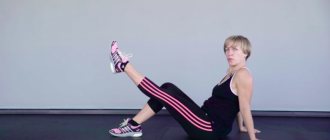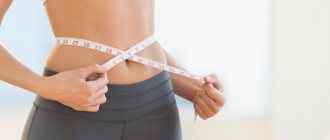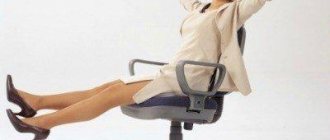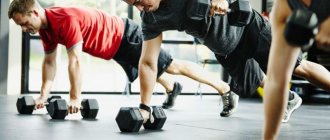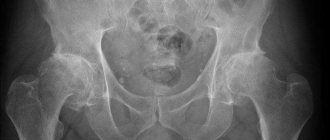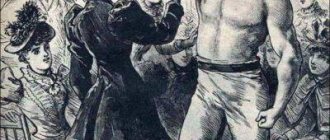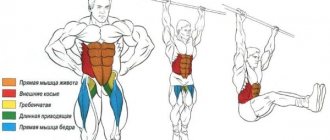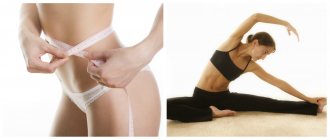Dr. Bubnovsky has developed a set of exercises, the regular implementation of which relieves diseases of the spine and the musculoskeletal system in general. How it works? Moderate, strictly dosed exercise accelerates blood circulation in the body. Thus, the regeneration of affected tissues occurs faster. An undeniable advantage is that you can perform Bubnovsky’s exercises at home; for beginners, such gymnastics is a completely feasible task.
Reasons for appearance
It should be noted that intervertebral hernia does not occur overnight. This should be facilitated by certain negative processes that affect the body for a long time. But the very appearance of the disease usually provokes some specific action. It can be called a kind of “last straw”, but not the root cause. Often such a provoking factor is sudden and incorrect lifting of heavy weights.
As for the real reasons for the development of intervertebral hernia, we can distinguish four main ones:
- Incorrect load on the back. And here we mean not only non-compliance with the rules when lifting loads, but also incorrect posture. Even a slight curvature of the spine can subsequently lead to more disastrous results.
- Lack of fluid. In this case, absolutely all the connective tissues of your body suffer, and therefore the intervertebral discs. The main function of the latter is spring. Thus, if there is not enough water, they will simply dry out and will no longer be able to withstand the load placed on them.
- Lack of exercise. With a passive lifestyle, your muscles and ligaments will gradually atrophy. Plus, the load on the spine allows you to improve blood circulation and metabolism.
- Poor nutrition. All your organs and tissues require a number of microelements for normal functioning, which can only be obtained through food. This category includes magnesium, potassium, phosphorus, and so on. With their deficiency, the intervertebral discs become porous and are no longer able to perform their function normally.
Five rules for effective training
Gymnastics for cervical osteochondrosis using Dr. Bubnovsky’s method will give a positive result if the following rules are followed:
- the first two weeks of classes should be done every day without missing;
- in the future, the physical therapy doctor determines the number of classes per week individually, usually they take place up to eight times a month;
- while performing gymnastics, it is necessary to constantly monitor your posture;
- Conduct classes in front of a mirror to control the accuracy of movements;
- The duration of the course of treatment with gymnastic exercises is determined individually by the physical therapy doctor, but this is at least three months.
Rules for performing exercises
Naturally, you can start physical activity only after you have relieved the pain syndrome. At this stage, it is extremely important to understand that the absence of unpleasant sensations does not at all indicate your recovery. But when performing therapeutic exercises for spinal hernia, you should follow a number of simple rules. Otherwise, you will not only not be able to correct the situation, but, on the contrary, you will only make it worse.
Firstly, you need to carefully monitor your own condition and interrupt classes at the first manifestation of pain. Remember that you should only perform exercises that will not cause you any discomfort. However, slight discomfort is acceptable, but if it occurs you should be as careful as possible. The same exercises during which you feel sharp pain in your back or neck should naturally be excluded from the general exercise program. But they can serve you as a kind of markers of recovery. If after several sessions you can complete them without any discomfort, then your condition has improved.
Secondly, at the first stage of training, it is recommended to avoid exercises that involve sudden jolts, jumping, and twisting of the body. Subsequently, when you and your doctor can note positive dynamics, some of them can gradually be included in classes to enhance the effect.
Thirdly, it is imperative to follow the correct training regimen. Start with small loads, gradually increasing them. Break the entire set of exercises into several parts and perform them about three to six times a day. The main thing in the treatment of intervertebral hernia is patience. It is impossible to cure your back in one day. Sudden loads will only worsen the problem. Try to do everything gradually and as gently as possible.
Recommendations
Therapeutic exercise helps to get rid of painful sensations without medication. Kinesitherapy is the science of treating diseases without pills, ointments, or operations. In situations where surgical intervention is inevitable, a moderate load will speed up the recovery of the body in the postoperative period.
Performing a set of Bubnovsky exercises at home will be even more effective if you use additional equipment. For example, training on the wall bars No. 8 with a block simulator will significantly bring the desired result closer. Hanging on the horizontal bar will relieve tension in the muscles, and sports equipment in the form of attachments, hyperextension and block exercise equipment will strengthen the muscles of the whole body.
Popular exercises
Lie on your back with your legs slightly bent and your arms extended along your torso. After this, consistently tense and relax your abdominal muscles. It is important not to hold your breath while doing this. Perform the exercise about 10-15 times in a row.
Then assume the position described above, but now extend your lower limbs. Raise your torso so that your buttocks do not leave the floor, and hold in this position for about ten seconds. Next, take the starting position again, rest for a while and repeat the described action again. The exercise consists of 10-15 approaches.
Lie on your back with your legs bent. Try to reach your forehead with your left knee, but at the same time prevent yourself from doing this with your right hand. Apply the load for ten seconds, then rest for the same amount of time. Repeat the exercise 10 times and change hands. When taking a break between sets, try to relax all the muscles in your body as much as possible.
Sit down, focusing on your legs and arms. After this, gradually raise your body until it is almost completely parallel to the floor. Hold this position for ten seconds, then return to the starting position. Repeat the exercise three times.
Bubnovsky system for the spine: preparation
Before you begin the exercises, read the following recommendations:
- A set of exercises should be done every day if you feel normal.
- You need to exercise on an empty stomach, so at least two hours should pass between meals and exercise.
- Before you start doing gymnastics, do a warm-up to help your muscles warm up. Using circular movements, knead your hands, knees, shins, and so on.
- After finishing your workout, take a cool shower and relax.
- Breathe correctly and deeply.
Main stages of the disease
One of the factors determining treatment tactics is the stage of arthrosis. It is established after radiography, based on specific signs of cartilage destruction and bone deformation. Each stage is characterized by certain symptoms.
Disease on x-ray.
| Stage of arthrosis of the knee joint | Distinctive features |
| First | The cartilage has lost its smoothness and elasticity, and microcracks have appeared on its surface. Occasionally, aching, dull pain occurs after increased stress on the knee. In the morning hours it swells a little, swells |
| Second | Radiographs show consolidation of the subchondral zone and the formation of multiple bone growths - osteophytes. Movement in the joint is limited, pain can appear both during the day and at night |
| Third | The cartilage layer is completely destroyed, the bone structures are deformed, as if wedged into each other. The pain becomes constant, gait changes, knee mobility is severely limited |
Prevention
Prevention of arthrosis of the knee joint is aimed at eliminating factors that provoke its development from the usual lifestyle. These are low physical activity, increased physical activity, excess weight, smoking, deficiency of vitamins and microelements in the body. And to prevent exacerbations of pathology, doctors recommend doing physical therapy daily and avoiding hypothermia. To prevent relapses, it is practiced to wear knee pads made of sheep or camel wool with a warming effect, as well as dense elastic orthoses.
Abdominal massage with a round stick
I.P. sitting on the edge of a chair or even standing, bending your body forward, preferably after a shower (wet body), massage your stomach with a stick, holding it by the ends, from bottom to top. At the same time, you can massage your buttocks and lower back. From one to five minutes.
This massage can be classified as a hard kneading. In this case, fatty rolls are felt on the abdomen, they are painful when kneaded. There is no danger from such a massage. Overcome the pain, what can you do.
It is better to perform it after a shower or by rubbing any anti-cellulite cream into the skin of the abdomen. Combine this massage with the previous exercise and get rid of the “hanging” belly, or “mirror disease”.
Riveting
The exercise is aimed at physically fit people. Only complete synchronization of exhalation and lifting of the legs allows you to perform this exercise correctly. A very effective exercise that allows you to develop excellent control of the muscles of the entire torso.
I.P. lying on your back. Hands straight behind the head. As you exhale “Ha-a,” bend your torso, trying to touch your straight legs with your straight arms. Up to 20 repetitions.
Contraindications: hernias (linea alba, umbilical or inguinal), pelvic organ prolapse (ptosis).
Symptoms
The leading symptom of gonarthrosis is pain. It is weak at the initial stage of its development, quickly disappearing after a short rest. But soon the pain becomes constant, intensifying when walking or standing for a long time. In order not to provoke their appearance, a person deliberately limits physical activity, which leads to weakening of the leg muscles.
Another typical sign of knee arthrosis is a crunching sound when bending and straightening the joint. It is not caused by the deposition of salts, as many believe, but by the destruction of the cartilage lining. Now the bone surfaces do not slide smoothly relative to each other, but move with difficulty. Because of this, clicks, crunching, and crackling noises are heard when moving.
The most important symptom is pain!
Pelvic twist
Exercise for the oblique abdominal muscles (waist). It is an excellent prevention of osteochondrosis of the lumbar spine, as it improves the mobility of the spinal column in the lumbar region. Targeted at physically fit people. Performed at a slow pace.
I.P. lying on your back, arms to the sides, legs bent. Lower your legs left and right until your knees touch the floor. Try not to lift your palms and shoulder blades off the floor. 10 to 20 repetitions in each direction. Perform each movement while exhaling “Ha-a”. A cracking sound in the lumbar region during the first 3-4 movements is allowed.
Contraindications:
- liver diseases in the acute and subacute stages (hepatitis, cirrhosis), conditions after appendectomy, cholecystectomy (first 6 months), urolithiasis and cholelithiasis in the acute and subacute stages;
- hernia (linea alba, umbilical or inguinal).
Ball ride
I.P. lying on the floor. Place a ball (basketball, football, volleyball) under your stomach. Roll on the ball clockwise (from right to left, from bottom to top), that is, over the entire surface of the abdomen - 5-10 circles. In the morning or evening, always on an empty stomach, after drinking at least a glass of water.
This is one of the best types of visceral massage for biliary dyskinesia, intestinal atony (Crohn's disease) and constipation. It has a good cosmetic effect for a large belly, toning the abdominal muscles.
Half-plough
I.P. lying on your back, holding onto a stationary support with straight arms. Raising your legs (straight or slightly bent at the knees) to a level of 90° or more (towards the floor), trying to touch the fixed support with your feet. It is advisable not to touch the floor with your heels when lowering your legs.
Raising and lowering your legs while exhaling “Ha-a.” Breathe like a locomotive. Don't think about inhaling, it will happen automatically. Perform the exercise from 10 to 20 repetitions in one series. A larger number is allowed, but without fanaticism. The main indicator of the adequacy of the exercise is the appearance of a burning sensation in the abdominal muscles.
The main indication for this exercise is osteochondrosis of the spine, including those with herniated discs. Exercise improves intestinal motility and blood circulation in internal organs.
Absolute contraindications: hernia of the white line of the abdomen, umbilical or inguinal hernia.
Relative contraindications: acute pain in the lumbar spine, hemorrhoids in the acute or subacute stages, uterine prolapse.
Features of the disease
Arthrosis of the knee joint (gonarthrosis) is a degenerative-dystrophic pathology that affects intra-articular cartilage. The disease is most often diagnosed in patients after 40-50 years of age. The older a person is, the higher the risk of knee arthrosis due to the gradual slowdown of recovery processes. Men suffer from gonarthrosis less often than women. Doctors explain this by changes in hormonal levels during menopause and deterioration in the absorption of calcium by the bone structures of the knee.
As the pathology progresses, the joint capsule, ligaments, and tendons are involved in the destructive process. Arthrosis is often complicated by synovitis - inflammation of the synovial membrane, which aggravates its course.
The main causes of gonarthrosis.
Contraindications
You should not exercise if you have respiratory and intestinal infections, especially if they are accompanied by high fever, chills, fever, and gastrointestinal disorders. Complete immobilization (ankylosis) of the knee is also a contraindication - in this case endoprosthetics is necessary. Doctors prohibit training if there is acute inflammation in the joint, the presence of malignant tumors of any location, or recent surgery.
Big belly
Indications: large or hanging belly for cosmetic correction purposes. Prolapse (ptosis) of internal organs, biliary dyskinesia, constipation, hemorrhoids, irritable bowel syndrome.
I.P. lying on your back, legs bent at the knee joints.
Retracting the abdomen towards the spine (you can hold the ball with your hands to visualize its lowering). The number of movements is at least 50.
It would seem like a simple exercise, but, as practice shows, most people have an inactivated diaphragm, and many find it difficult to understand and feel this exercise, since the abdominal muscles are also poorly developed. Think about the exercise, learn to feel a kind of “sticking” of the stomach to the spine, then the diseases described above will disappear without you noticing.
The ball helps at the first stage, since it should visibly “sink into the stomach” during a long exhalation.
